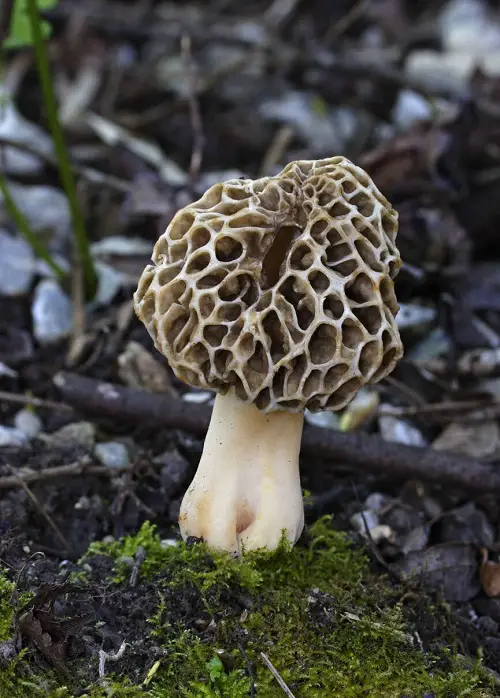We’ve got all the info about the Best Edible Long Stemmed Mushrooms to make your dishes look good and savor amazing flavors!
Ever wondered which long-stemmed mushrooms are safe to eat? Our guide will show you some of the tastiest and most recognizable edible varieties, helping you become a more confident mushroom forager!
Edible Long Stemmed Mushrooms
1. Shimeji Mushroom
Botanical Name: Hypsizygus tessellatus
Have you ever heard of Shimeji mushrooms? These cool little mushrooms are originally from East Asia, kind of like a bunch huddled together with long, skinny stems. They come in a few varieties, but most have small, brown or white caps.
The neat thing is, they have a nutty, slightly sweet flavor, and get all tender and delicious when you cook them. You can find them in stir-fries, soups, or even on pizzas!
2. Shaggy Mane
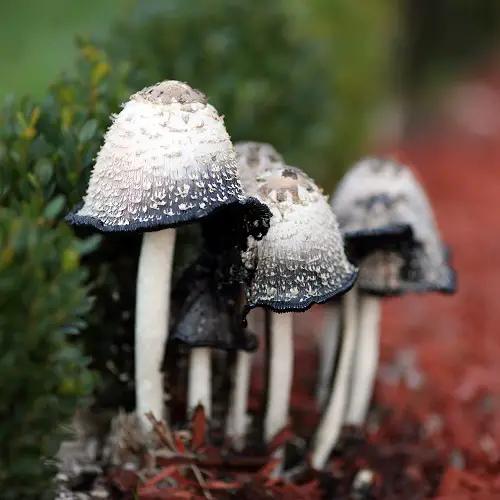
Botanical Name: Coprinus comatus
Shaggy Mane mushrooms are tall and white with a shaggy cap. Here’s the twist–these mushrooms self-destruct! Their gills turn black and melt into an inky liquid, which is why they’re also called “inky caps.”
The good news is, you can enjoy their delicious flavor, like a mix of mushroom and asparagus, if you catch them young. They’re great sauteed, or you can even bread and fry them for a crispy treat!
3. Parasol Mushroom
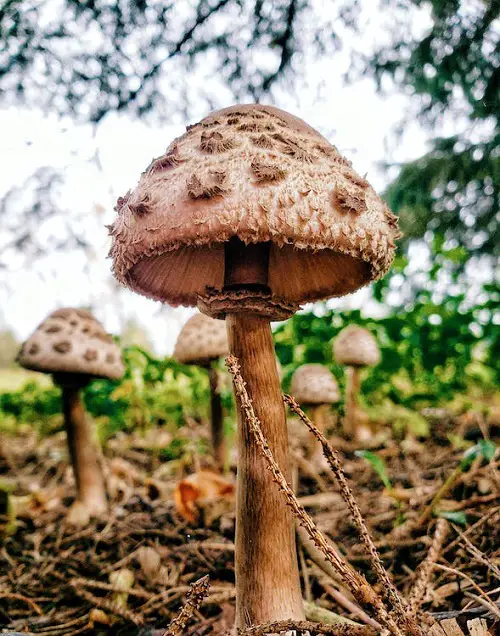
Botanical Name: Macrolepiota procera
Parasol mushrooms are majestic giants! They’re big, impressive mushrooms with a wide, flat cap that looks like a fancy parasol. The cap is usually white with brown speckles, and the whole thing sits on a tall, slender stalk with a cool snakeskin pattern.
These guys are considered a delicacy, with a mild, nutty flavor that gets even better when cooked. You can slice them up for stir-fries or even bread and fry them for a crispy delight.
4. King Oyster Mushroom
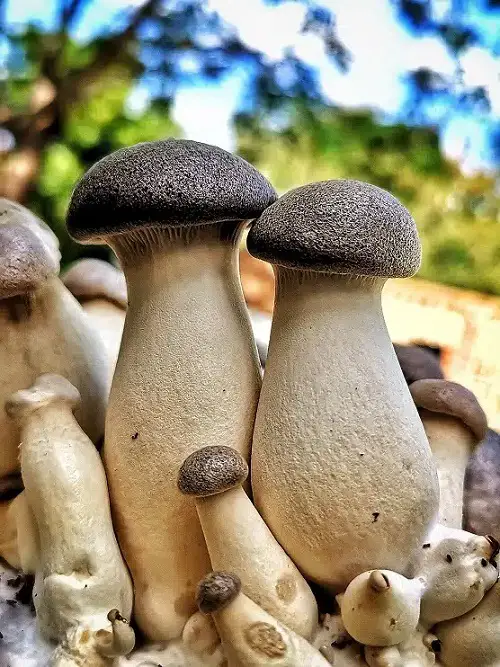
Botanical Name: Pleurotus eryngii
King Oyster mushrooms are really the kings of size, with thick, meaty stems and plump brown caps. But forget tough and chewy—king oysters are known for their incredible texture, almost like a juicy scallop when cooked.
And the best part? They have a deep, savory, umami flavor that makes them superstars in all sorts of dishes. You can roast them, grill them, stir-fry them—they’re super versatile!
5. Black Poplar Mushroom
Botanical Name: Agrocybe aegerita
Black Poplar mushrooms are long stemmed and edible ones and have long, light-colored stems. They are popular in Europe and Asia but may be a bit of a hidden gem in some places.
The cool thing is that they have a nutty and slightly crunchy texture. You can saute them with some olive oil and garlic, throw them on a pizza for a woodsy flavor boost
6. Wood Blewit
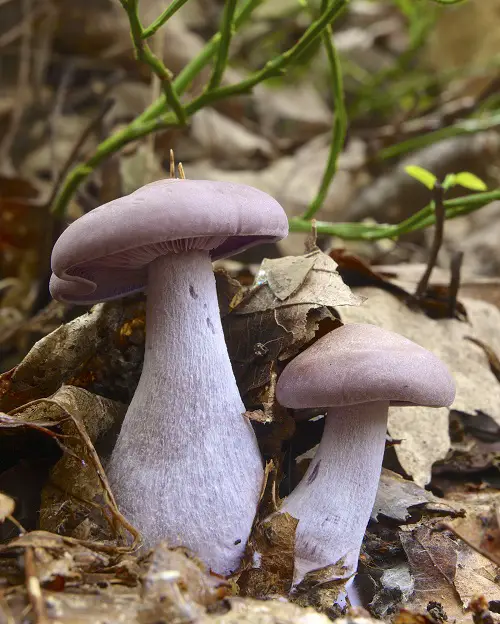
Botanical Name: Lepista nuda
Wood Blewits pop up in the colder months, from November to February, when pickings are slim. They are violet-tinged mushrooms with smooth, rounded caps.
They might look delicate, but they’re quite tough and can even be found growing in circles. Just remember, like most wild mushrooms, wood blewits gotta be cooked thoroughly before you enjoy them.
7. Caesar’s Mushroom
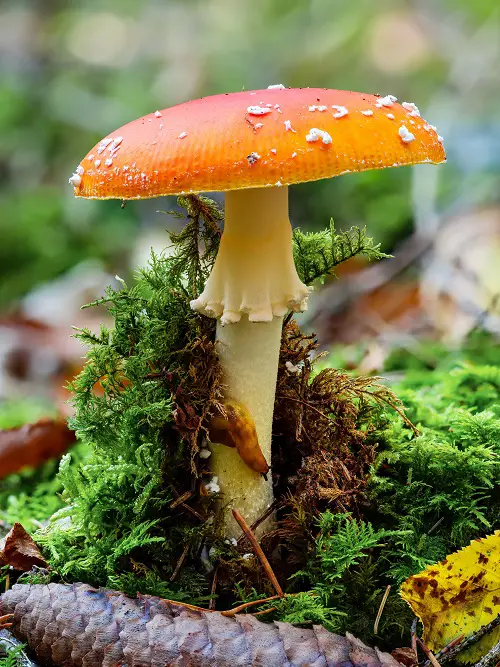
Botanical Name: Amanita caesarea
Caesar’s mushroom is a really fancy find, a European favorite known for its stunning looks and delicious taste. It’s prized for its delicate, slightly fruity flavor that gets even more amazing when cooked.
People love to saute them, add them to fancy pasta, or even just enjoy them sliced on toast.
Note: Caesar’s Mushroom has many poisonous look-alikes, so be absolutely sure of what you’re picking if you’re ever out foraging in the wild. This one is best left to the experts unless you’re a confident mushroom hunter!
8. Honey Mushroom
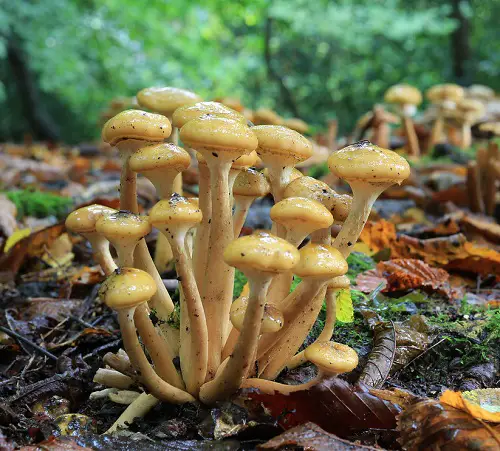
Botanical Name: Armillaria mellea
Honey mushrooms are a bit of a double-edged sword. They sound delightful, right? And sometimes they are! There are actually several edible species in the genus Armillaria, known as honey mushrooms.
They sprout from the base of trees or from buried wood, like nature’s hidden treasure. The good news? When properly identified and cooked, they have a delicious honey-like flavor and a pleasant texture.
Note: There are also poisonous look-alikes to Honey mushrooms. Because of this, it’s super important never to eat a wild honey mushroom unless you’re 100% sure of the identification.
9. Morel
Botanical Name: Morchella spp
Morels are long stemmed edible mushrooms that look like a golden honeycomb. Morels are a springtime delight, popping up after the winter chill.
Chefs love using them in fancy dishes, but they’re great simply sauteed with butter or added to creamy sauces. Their earthy, nutty flavor with a hint of smoke is unlike anything else.
10. Stinkhorn

Botanical Name: Phallus impudicus
Stinkhorns are famous for their awful smell, like rotting flesh or poop. It’s no surprise they use this pungent odor as a strategy—to attract flies and carrion beetles.
Believe it or not, Stinkhorns can be edible, but with a big ol’ “but”–only the immature stage, the one that looks like an egg (thankfully with no smell!), is considered edible. It has a radish-like flavor and crunchy texture.




